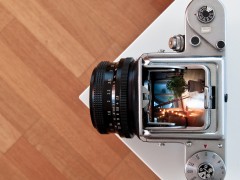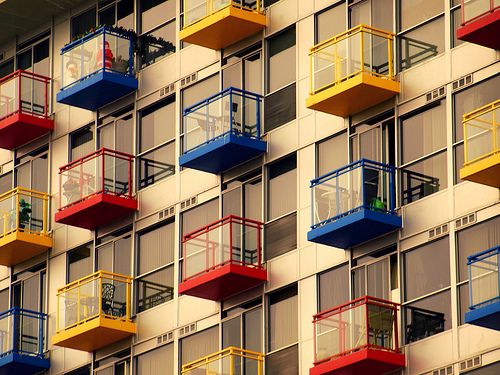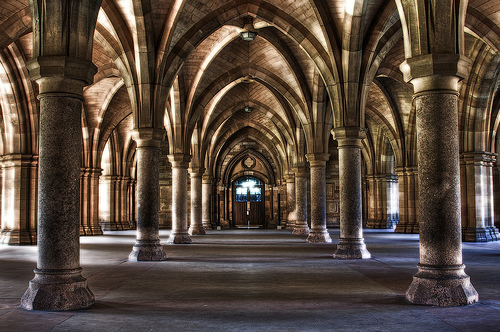 How long have you been using a DSLR? Are you well acquainted with the various features, controls and settings it offers?
How long have you been using a DSLR? Are you well acquainted with the various features, controls and settings it offers?
You might be well conversant with the various auto modes, shutter speed settings, aperture f-stops, metering modes and the likes. There is still a lot to explore. One quick example I can cite here is the under-utilized DOF preview button or the hidden bulb mode settings. Similarly there are so many other advanced features and custom options which come packed with this highly sophisticated piece of photo-taking machinery — some hidden in the menus and others skipped off the user manual. So here we compile a list of 10 things which you might not know your DSLR could do. Check them out here. Disclaimer: You’ll have to check your camera manual if a particular feature is supported or not.
-
Highly Interactive Guide Mode
Camera manufacturers are on the look out to beat their competitors with minor differences they can bring to their products. Nikon made the smart move by introducing the Guide mode in D3000 for the first time. This mode makes it easy for the newbies to learn and apply the camera settings on the go. While this is an excellent feature for the beginners, intermediate users can also give it a try to have a better grip of things.
-
Focus-Locking
Also called the back button focusing, it is an advance option for changing the way the auto focus activates. By default, the focus is locked when you press the shutter half-way. The exposure is made when you press the shutter all the way down. With back button focusing, you can assign the button on the rear-side of the DSLR to lock the focus. This way you can set the focus on the subject, compose & re-compose the shot and take the shots without altering the focus points in between the shots.
-
Horizon Leveling
If you’re shooting a lot of sunsets, architectures and mountain photographs of late, you might have already realized the importance of this feature — Horizon Leveling (Canon’s terminology) or Virtual Horizon as Nikon calls it. While you can easily level the horizons in Lightroom or Capture NX with the help of Straighten tool, it comes at the cost of cropping the frame edges. However, the Virtual Horizon feature as provided in Nikon D300s displays a simple grid to show the camera’s position relative to the horizontal axis. This visual guide comes in handy to take the guesswork off leveling the scene.

-
Tethered Shooting
One of the coolest feature of Lightroom 3 was tethered shooting — the ability to shoot the photographs right from the Lightroom’s interface. The feature was introduced in the light of the fact that the cameras had already premiered the support for this feature. So, by connecting your camera to the computer via USB cable you get the ability of shooting tethered; i.e, when you release the shutter the photos are stored on your computer’s hard disk and not on the camera’s memory card. You can instantly review the images on the large screen and accordingly make settings for subsequent shots. This is excellent for experimenting with your camera and learning how various settings affect the output.
-
Using Customized JPEG Profiles
Another useful option that is hidden among the menu options is the ability to manage and customize the picture controls. Your camera features some pre-defined picture control options and provides you the flexibility to create custom ones. You can make adjustments for various parameters like sharpening, contrast, brightness, saturation, etc and create a custom JPEG profile which can be exported to and imported from other cameras from the same manufacturer. While Nikon calls it Picture Controls, Canon refers to it as Picture Styles. Canon features C1, C2 and C3 modes next to auto modes dial for easy access to the customized settings.

-
Exposure Bracketing Modes
Exposure bracketing is used for setting the various exposure bracketing modes. The exposure bracketing settings allows you to set the number of shots and the respective EVs for each shot. You can make these settings by entering the Custom Setting Menu and thereafter use the BKT button to simply turn on the automatic bracketing for taking multiple shots of the scene by varying the exposure values. Learn more about this feature here.
-
DOF Preview Button
It sounds quite strange that the DOF preview button is amongst one of the under-utilized feature of your camera. The DOF-preview button allows you to lock down the aperture to your chosen setting and allows you to get a preview of the depth-of-field before you take the shot. Photographers with specs: don’t bother. Check out more about DOF preview button here and start using it to move beyond hit and trial approach in aperture priority mode.

-
Avoiding Camera Shake With Mirror Lockup / Mirror Up Mode
Macro photography, close up shots or long exposure photos require you to avoid the slightest of the camera shake. Even the minor mirror shake can act upon the sharpness of the image. Did you know that your camera features a Mirror Lockup mode which can come in handy for preventing the camera shake caused by mirror movement?
-
Multiple Exposure, Time Lapse and HDR capabilities of a DSLR
Along with the various scene modes, DSLRs are good at offering creative options like multiple exposure, in-camera HDRs and ability to shoot multiple images at set time interval. While getting to see multiple exposure mode and in-camera HDR capabilities is common these days, there is a good list of camera’s with in-built time lapse abilities as well. Check out a list of Canon DSLRs capable of shooting time lapse sequences here. Even though your camera doesn’t have an in-built intervalometer, you can still use an external intervalometer to create fantastic time lapse images and videos.

-
In Camera Image Editing Options
The latest Nikon, Canon and Pentax DSLR lineage prominently feature a huge list of in-camera image editing options — distortion control, straighten tool, red-eye correction, selective color & a variety of filter effects. You can get some interesting results by trying fish-eye or miniature effect. And the best part of in-camera editing feature is that it applies the changes to JPEGs while preserving the RAW images as it is. This way you can have multiple versions of the same image but with different effects. Likewise, you can convert the image to black and white in camera by choosing one of the monochrome settings (b&w, sepia, cyanotype) or apply warm filter to enliven the landscapes and soft filter to replicate the effect of soft focus filter.
Tell us a thing your camera offers.


Is this only for Nikon and Cannon cameras? :(
@maria: No. These are just some of the features of the current DSLRs. You may want to check the camera manual to see if a particular feature is available in your camera or not.